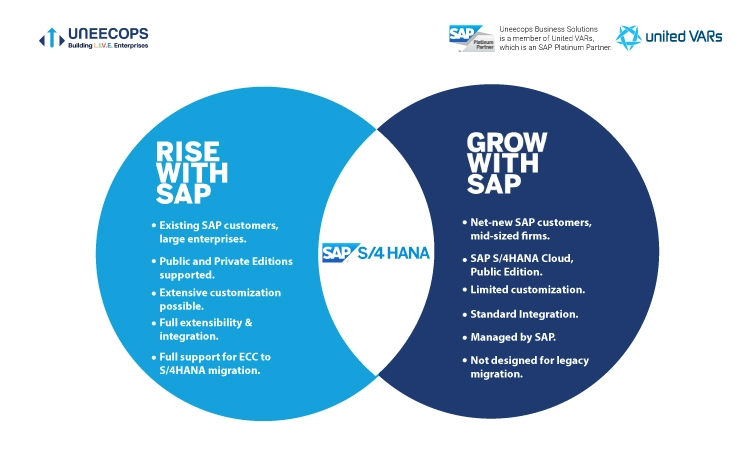Along with functional improvements, SAP S/4HANA Cloud brings with it several architectural and technical modifications that need to be considered. These will significantly influence what you test in your SAP landscape moving forward.
A critical phase of an ERP implementation is testing. Many businesses use manual testing to confirm modifications to critical business processes. However, this can create a barrier to switching to the S/4HANA cloud as it is expensive, time-consuming, and not accurate enough.
SAP S/4HANA, SAP’s latest ERP software, leverages the HANA database, impacting all business facets. Deployment and integration often necessitate collaboration with SAP Implementation partners for successful SAP S/4HANA implementation testing.
This post will discuss the challenges faced in migration testing SAP S/4HANA and how to overcome them.
Challenges in SAP S/4HANA Migration Testing
- Optimizing Test Service Cost
The high costs associated with manual testing pose a challenge for SAP S/4HANA Cloud migration testing, often exceeding 30% of the average SAP project budget. Collaboration with SAP Implementation partners can streamline processes and optimize costs by leveraging their expertise in deployment and integration.
- Lack of Accuracy and Reliability
Lack of accuracy in manual testing poses a challenge, particularly in SAP S/4HANA cloud migration testing where precision is critical. Utilizing SAP testing tools like Selenium, JMeter, TOSCA, eCATT, Test Complete etc. can mitigate human errors, enhancing accuracy and reliability in the testing process, and ensuring successful implementation.
- Speeding Up the Time-consuming Process
Consider introducing test automation to speed up and streamline the testing process to solve the time-consuming nature of manual testing in S/4HANA cloud implementations. Automated tests can significantly reduce the time required for repetitive processes, enabling faster and more effective migration to the SAP S/4HANA cloud. This is especially crucial in SAP S/4HANA migration testing where time constraints often challenge project deadlines.
- Testing Complex Functionalities
With its many functionalities and components, S/4HANA is complex and makes thorough testing difficult, particularly during an ERP implementation.
Use risk-based testing techniques, break testing into manageable steps, and prioritize the most critical capabilities to handle the complexity of S/4HANA cloud. Deploy testing teams with expertise and talent who know and can deal with complex systems.
- Trouble Tracking and Managing Tests
Having trouble tracking and managing tests is a common issue with manual testing, especially in SAP environments. Utilizing SAP testing tools and platforms can address this challenge by providing centralized control, continuous monitoring, and comprehensive reporting, improving test management efficiency and effectiveness.
- Limited Test Automation
Limited test automation often stems from insufficient tools and resources, hindering companies from implementing efficient testing processes. Collaboration with SAP Implementation partners can address this challenge by providing expertise, training, and guidance in deploying automation technologies effectively. Prioritizing test cases with the highest impact for automation can optimize resource utilization.
- Difficulty of Maintaining Test Cases
The complex nature of the ERP implementation makes it difficult to maintain test cases.
Establishing a robust documentation process, implementing version control for test cases, and regularly reviewing and updating test scripts to reflect system changes to help overcome the difficulty of maintaining test cases in a complex system.
- Difficulty in Measuring the Impact of Changes
With manual testing, it becomes difficult to measure the impacts of system modifications during the ERP implementation process.
To address this, thorough regression testing and comprehensive documentation of changes are essential. Additionally, utilizing a test management solution with traceability and detailed reporting features specific to SAP S/4HANA Cloud can provide better insights into the impact of changes.
9. Test environment set-up in the cloud
Setting up your test environment in the cloud can be a challenge because you need to consider both the type of testing tool and how to ensure access from your own premises and from offshore. Your cloud test tool setup must be appropriate to overcome the challenges in terms of performance, data, application and test tools.
3 Testing Recommendations for SAP S/4HANA Migration Testing
In the entire migration process, testing typically constitutes a substantial portion. In ensuring successful transition with minimal disruption, testing is 30% to 60% of overall migration effort. The bad news is that many projects fail to conduct a thorough assessment during the planning phase in order to estimate the testing effort accurately and allocate adequate resources, time, and budget for testing activities during an SAP migration Project.
- Role-based Testing
In SAP S/4HANA cloud migration testing, role-based testing is crucial, especially with the release of SAP Fiori. Utilizing SAP testing tools ensures comprehensive testing of over 300 roles across various devices, including mobile and desktop computers, ensuring compatibility and functionality across the SAP landscape.
- Functional Testing
One of the most important components of SAP S/4HANA cloud migration testing will be comprehensive testing of all new functionalities. Functional modifications can serve as the foundation of a regression test suite. Businesses that have previously invested in automation technologies can use them to test new features.
- Performance Testing
Performance testing is essential for ensuring optimal operation of SAP S/4HANA Cloud, particularly with the introduction of SAP’s own HANA database. It’s imperative to prioritize performance testing on recently implemented processes to maintain system efficiency and meet performance standards.
Reduce S/4HANA migration testing risks, delays & disruptions with Uneecops
Moving to SAP S/4HANA might be a choice now, but it will soon become a necessity. Within few years, SAP will no longer provide support for its ECC systems, so businesses should start planning their SAP S/4HANA migration along with full-proof SAP S/4HANA migration testing right the first time.
Overcoming challenges in SAP S/4HANA migration testing requires careful planning, teamwork, and flexibility. Organizations can effectively overcome complexity by using robust testing processes and developing a culture of continuous improvement. Using automation and state-of-the-art solutions speeds up the process and guarantees a seamless transfer with few interruptions.
Uneecops as a pioneer in providing SAP S/4HANA Services helps in smooth SAP S/4HANA migration that keeps your business running and protecting your user experience as you go. Uneecops Business Solutions (UBS) is SAP implementation platinum partner and a member of United VARs, that helps with SAP S/4HANA cloud public solutions. You get end-to-end SAP implementation services along with managed services support.







